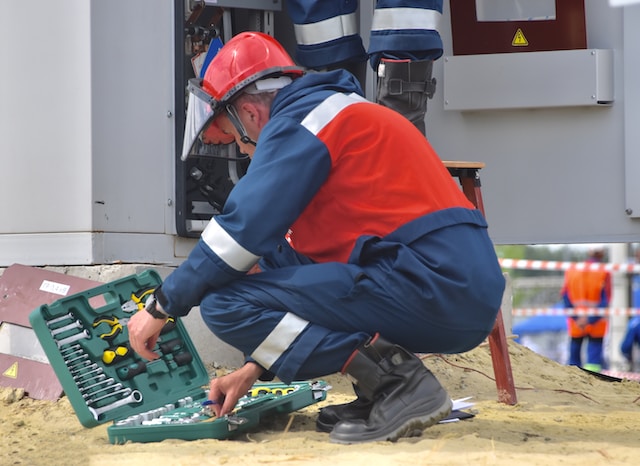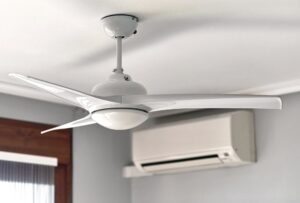Safety Precautions
Safety is always the most important thing when it comes to finding electrical faults. For the safety of the inhabitants of a building, all electrical products have to be installed and implemented in accordance with the building regulations of the area the building will be built. If for any reason you believe that your home’s electrical system was improperly installed and may violate the law, you should consult an electrician that specializes in checking for code violations. Such an electrician can easily be found online.
First and foremost, never take a risk when it comes to electrical safety. Before you decide to begin any kind of electrical work, including simple electrical fault finding, you’ll need to adhere to these strict safety protocols:
- Turn off the main power to the building via a fuse box or unit. It’s extremely important that you isolate the specific circuit you plan to check by removing its circuit fuse. Keep this circuit fuse in your pocket to avoid losing it.
- For those who have breakers, switch it off entirely and lock it if possible. For additional safety, put a note on the breaker to let others know that you are currently working on the circuit.
- Ensure that the circuit is dead using a socket tester. Use a voltage tester for circuits that are attached to light fixtures.
- Stay away from water at all times and do not try to find electrical faults with wet hands.
- Always wear insulated rubber gloves as well as goggles when working on the circuit.
It’s also a good rule of thumb to never use a metal ladder when working on a circuit either. If you think the electrical fault is very high up on your home and you will need a ladder to find it, stick to wood or fiberglass.
The Signs, and Symptoms of Electrical Faults
An electrical fault could be behind a number of different electrical issues in your home. Some of the more common signs of an electrical fault include the following:
- Dimming lights or flickering light
- Black or otherwise dark splotches around your sockets
- Sparking from your outlets
- A missing fuse or several missing fuses in your fuse box
- Burning smells that reoccur
- Tingling or buzzing sensation when touching wires or plugs
- Very clear damage or exposed wiring
- Plug that are very hot, as well as adapters
- Loose or “wiggly” sockets or switches
- Popping sounds or crackling sounds
It’s also possible that an electrical fault is the result of poor or botched repair jobs. Looking signs of this, which can include odd socket placement or wiring that runs over the wall. Another sign of botched repairs or installations includes blue flashes and frayed wires. Be very careful around these.
The Process of Finding a Fault
If you’re still not sure if you have an electrical fault, there are a few ways to check for one and find one.
Use an appliance
To start, perhaps a plugged-in appliance isn’t working. Try changing the bulb first if it is a light appliance. For other appliances, try plugging it into a different socket. If it is working properly, the first socket could possibly be faulty and will need to be replaced. If it is not working properly, you could try using another power circuit on another floor if possible. If the appliance does work there, there is the possibility of a dead circuit. If your appliance does not work in a socket that you know for a fact works, it may be a good idea to check on the flex connections within the plug and to replace the fuse. Ensure that it has the right rating before doing this.
If the appliance is still not working, it may be time to call an electrician– you’ve just found an electrical fault.
Check for a dead circuit
To see if a dead circuit may be causing an electrical fault, turn off all of the affected circuit’s lights and unplug all of your appliances. Then, turn off the main switch in your consumer unit and then reset the circuit breaker. Now, turn the main switch back on.
From here, you should turn on every light and plug-in each appliance, in turn, to see which item along the circuit is causing a trip or blow. Once you find the problem item, isolate the circuit once again and check the fuse, connections, and flex. If it blows or trips again, then the electrical fault is likely in the fixed wiring and you’ll need to call an electrician.
Using a wall or ceiling light
To begin, see if the other lights on that specific circuit are working. If they aren’t, you’ll need to check for a dead circuit through your Residual Current Device. If they are working, try turning the lights off and replacing your lightbulb. If the light still doesn’t work, turn your power off and check the cable and flex connections on the light. You may need to strip back the cores and redo the connections while making sure all of the terminal screws are tight. Check the flex condition with a continuity tester and replace the flex if necessary.
If this doesn’t work, turn off the power once more. Remove the switch cover and look through the cable connections. If they are loose, simply remake them and tighten them. If they seem fine, try replacing the whole switch. If this still doesn’t work, there is likely a much more complex electrical fault occurring that will require an electrician.











